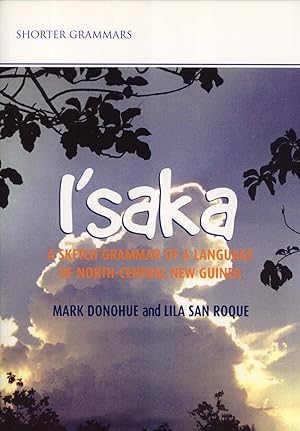Mark Donohue Lila San Roque (1 results)
FeedbackSearch filters
Product Type
- All Product Types
- Books (1)
- Magazines & Periodicals (No further results match this refinement)
- Comics (No further results match this refinement)
- Sheet Music (No further results match this refinement)
- Art, Prints & Posters (No further results match this refinement)
- Photographs (No further results match this refinement)
- Maps (No further results match this refinement)
- Manuscripts & Paper Collectibles (No further results match this refinement)
Condition
- All Conditions
- New (No further results match this refinement)
- Used (1)
Binding
- All Bindings
- Hardcover (No further results match this refinement)
- Softcover (1)
Collectible Attributes
- First Edition (No further results match this refinement)
- Signed (No further results match this refinement)
- Dust Jacket (No further results match this refinement)
- Seller-Supplied Images (1)
- Not Print on Demand (1)
Free Shipping
- Free Shipping to U.S.A. (No further results match this refinement)
Seller Rating
-
I'saka: A Sketch Grammar of a Language of North-Central New Guinea (Pacific Linguistics, 554)
Published by The Australian National University, 2004
Seller: Masalai Press, Oakland, CA, U.S.A.
Soft cover. Condition: Fine. 131 pp., bibliography, index. I'saka, the language of 600-plus residents of Krisa village in north-central New Guinea, is a previously undescribed language of the Macro-Skou family, which spreads across the north coast of New Guinea from the Skou villages in the west to Sissano lagoon in the east. I'saka represents the earliest split from the protofamily, and so represents a valuable source of data for comparative work in northern New Guinea. The language is endangered, with many of the younger generation switching to Tok Pisin as their language of everyday communication, but I'saka remains the language of ethnic identity and is seen as emblematic of the uniqueness of the I'saka people. The grammar of I'saka is interesting for the general linguist as well as for the New Guinea specialist, since it displays many features, some possibly unique, which will prove challenging for modern theoretical and typological linguistics. Two independent suprasegmental tiers for tone and nasality, and a lack of contrastive segmental nasals, are rare phonological phenomena. Morphologically, the language displays a paradigm of agreement morphemes that agree with non-core arguments, while leaving, in most cases, the object of a transitive clause unmarked on the verb. Special agreement marking for questioned subjects is also an unusual feature of I'saka. This sketch includes discussion of the historical relationship between I'saka and other languages in the Macro-Skou family, as well as issues of language endangerment, language maintenance, and spheres of language use. There is also a word list and a selection of short texts illustrating many of the points covered in the grammatical description. 0.0.


